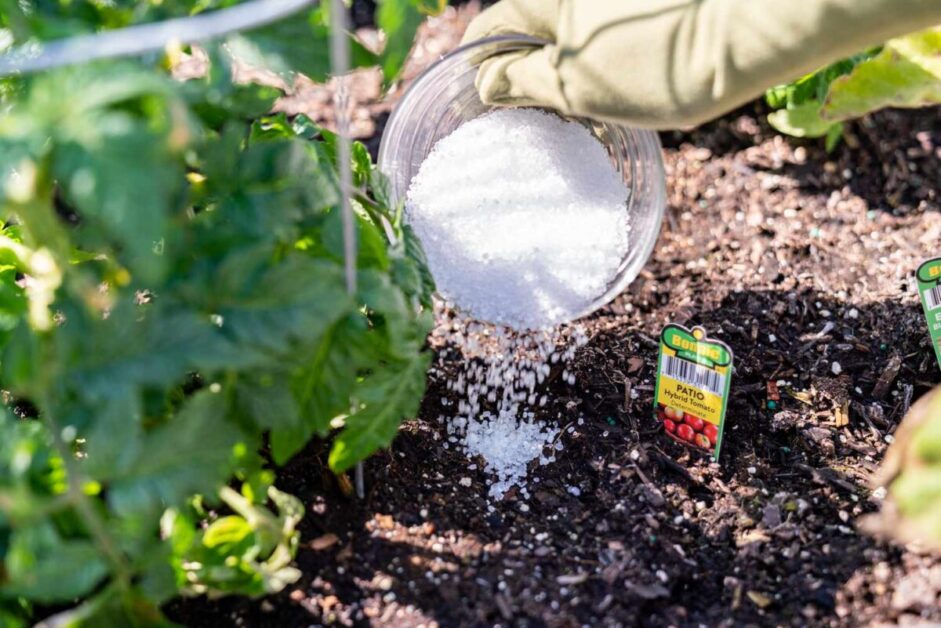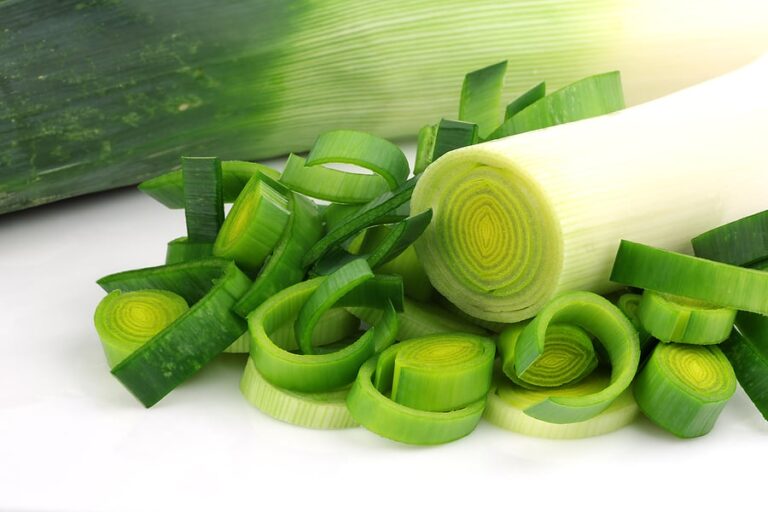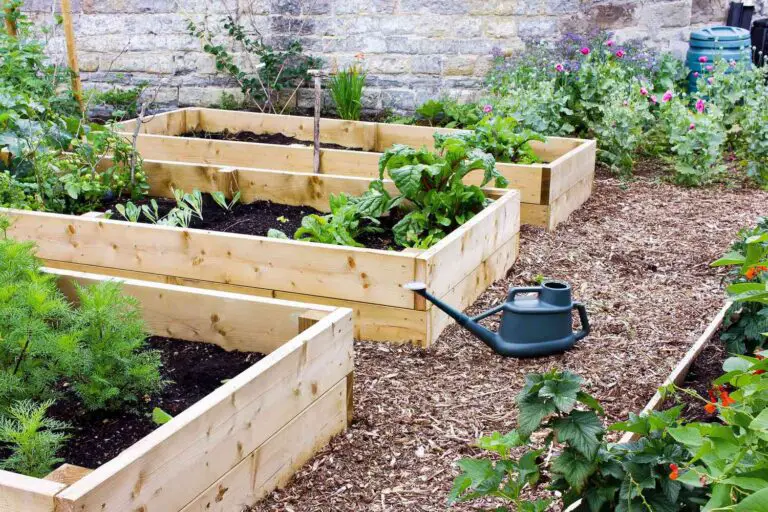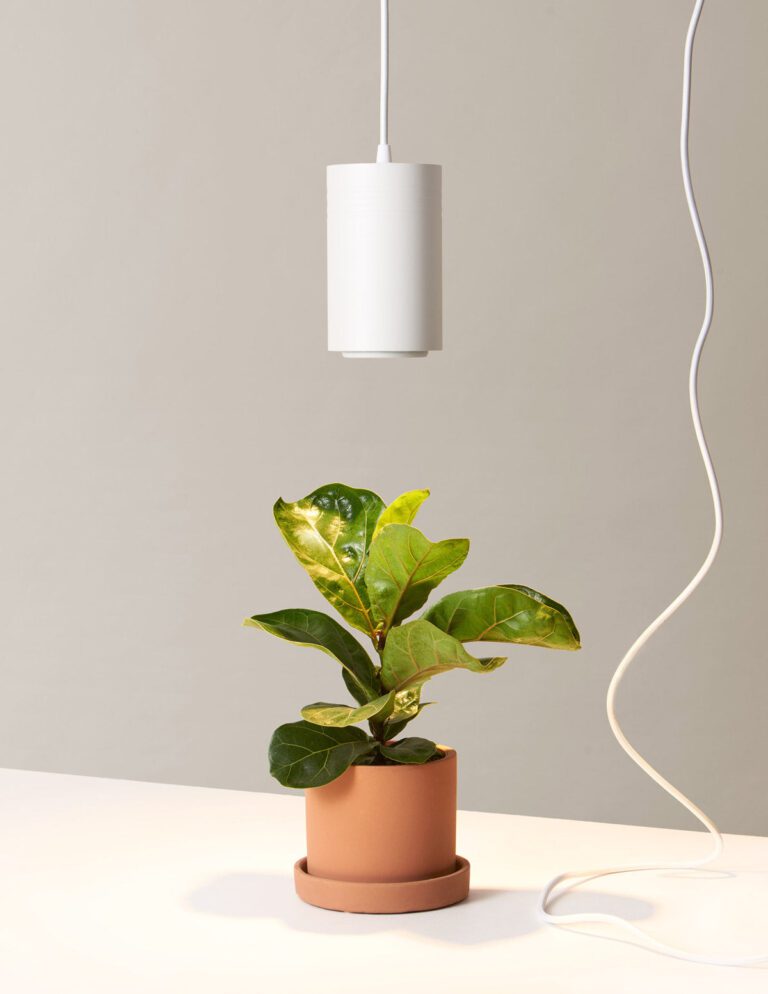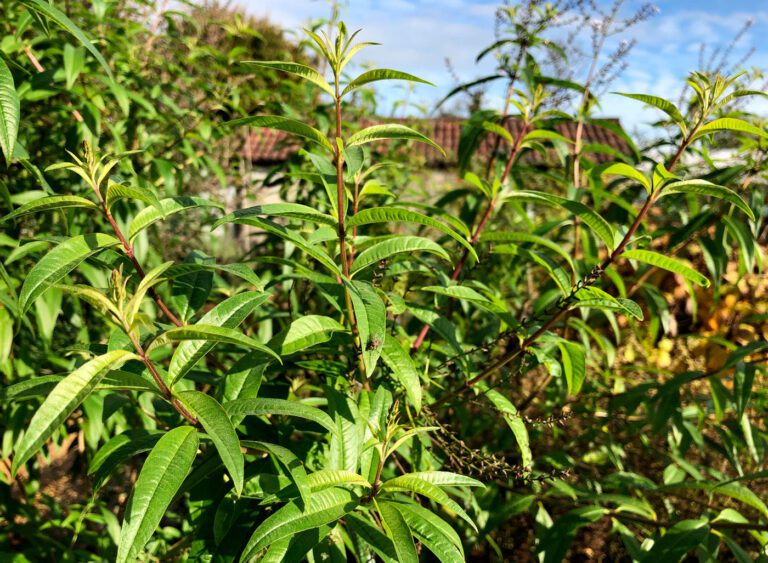Assessing How Epsom Salt Affects Plants
Table of Contents
The Benefits of Epsom Salt for Plant Growth

Epsom salt, also known as magnesium sulfate, is renowned for its numerous benefits in promoting healthy plant growth. One of the key advantages is its ability to provide an essential nutrient to plants – magnesium. Magnesium plays a pivotal role in helping plants produce chlorophyll, the vital pigment responsible for photosynthesis. By ensuring an adequate supply of magnesium, plants can efficiently convert sunlight into energy, resulting in improved growth and development.
Additionally, Epsom salt can enhance nutrient absorption in plants. It aids in the uptake of essential nutrients such as nitrogen, phosphorus, and potassium, allowing plants to maximize their nutrient utilization. This can ultimately contribute to a stronger and more resilient plant, better equipped to withstand environmental stressors such as drought or disease. In turn, this enhanced plant health can lead to improved yields and a more vibrant garden or crop.
Understanding the Nutritional Needs of Plants
Plants, like any living organism, require certain nutrients to thrive and grow. Understanding the nutritional needs of plants is crucial for any gardener or plant enthusiast. Generally, plants require macronutrients, such as nitrogen, phosphorus, and potassium, as well as micronutrients, including zinc, iron, and manganese. These nutrients play essential roles in various plant functions, from photosynthesis and growth to disease resistance and fruit development.
One frequently asked question is, “Can plants get all the nutrients they need from the soil?” While the soil does provide many essential nutrients, it is important to note that the availability and concentration of these nutrients can vary. Factors such as soil pH, organic matter content, and soil microbial activity can affect nutrient availability to plants. Therefore, it may be necessary to supplement the soil with fertilizers or other nutrient sources to ensure that the plants receive a balanced and adequate supply of nutrients. Additionally, certain environmental conditions, such as heavy rainfall or leaching, can wash away nutrients from the soil, further emphasizing the need for regular monitoring and supplementation of plant nutrition.
| Nutrient | Function in Plants | Common Sources |
|---|---|---|
| Nitrogen (N) | – Essential for leaf and stem growth | – Nitrate and ammonium compounds in fertilizers, organic matter. |
| Phosphorus (P) | – Promotes root development | – Phosphate fertilizers, bone meal, rock phosphate. |
| Potassium (K) | – Supports flower and fruit formation | – Potash fertilizers, wood ashes, banana peels. |
| Calcium (Ca) | – Strengthens cell walls | – Lime, gypsum, calcium nitrate. |
| Magnesium (Mg) | – Component of chlorophyll | – Epsom salts, magnesium sulfate, dolomitic lime. |
| Sulfur (S) | – Aids in protein synthesis | – Sulfate fertilizers, gypsum, elemental sulfur. |
| Iron (Fe) | – Essential for chlorophyll formation | – Iron chelates, ferrous sulfate, iron-rich organic matter. |
| Manganese (Mn) | – Involved in enzyme activation | – Manganese sulfate, manure, compost. |
| Zinc (Zn) | – Required for various enzymatic reactions | – Zinc sulfate, zinc chelates, manure. |
| Copper (Cu) | – Participates in photosynthesis | – Copper sulfate, copper chelates, compost. |
| Boron (B) | – Aids in cell division and sugar transport | – Borax, boric acid, boron chelates. |
| Molybdenum (Mo) | – Assists in nitrogen metabolism | – Sodium molybdate, molybdenum chelates, legume nodules. |
Note: Plants require a balance of these essential nutrients for healthy growth. The availability of nutrients can vary based on soil type, pH, and other factors. Regular soil testing helps ensure proper nutrient levels for optimal plant development.
The Role of Magnesium in Plant Health
One of the essential nutrients for plants is magnesium, which plays a crucial role in their overall health. Magnesium is considered a macronutrient because plants require it in relatively large quantities. It is an integral component of chlorophyll, the pigment responsible for capturing sunlight during the process of photosynthesis. Without sufficient magnesium, plants cannot produce enough chlorophyll, resulting in stunted growth and reduced vigor.
In addition to its role in chlorophyll production, magnesium also helps in the activation of various enzymes involved in plant metabolism. These enzymes are responsible for facilitating important biochemical reactions, such as the breakdown of nutrients and the synthesis of proteins and carbohydrates. Furthermore, magnesium is involved in the transportation of other essential nutrients, such as phosphorus and potassium, within the plant. Therefore, adequate magnesium levels are necessary for optimal nutrient uptake and overall plant health.
How Epsom Salt Provides Magnesium to Plants
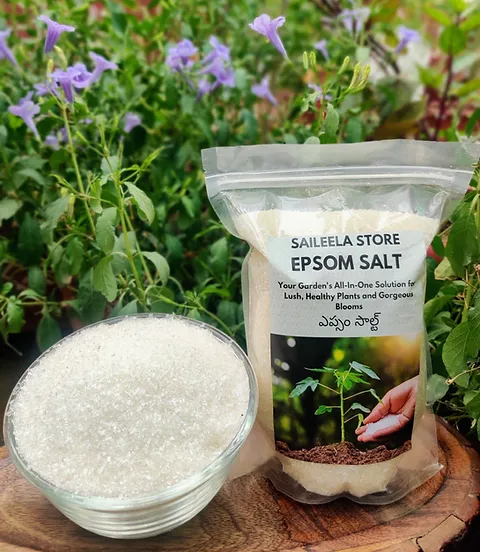
Epsom salt, also known as magnesium sulfate, plays a vital role in providing essential magnesium to plants. Magnesium, one of the primary macronutrients needed for plant growth, is crucial for the synthesis of chlorophyll, a pigment that gives plants their green color and enables photosynthesis. Magnesium is involved in the activation of enzymes responsible for carbohydrate metabolism, protein synthesis, and nutrient absorption. Without an adequate supply of magnesium, plants may exhibit stunted growth, yellowing leaves, and reduced fruit production.
When it comes to supplying magnesium to plants, Epsom salt offers a natural and cost-effective solution. Epsom salt dissolves easily in water, allowing for efficient uptake by plant roots. Once absorbed, the magnesium is transported to various parts of the plant, where it fulfills its vital functions. It is important to note that while Epsom salt provides magnesium to plants, it does not provide other essential nutrients plants need for healthy growth. Therefore, it is crucial to ensure a well-balanced nutrient regimen for optimal plant development.
The Effects of Magnesium Deficiency in Plants
Magnesium is an essential nutrient for plant growth, playing a crucial role in various physiological processes. When plants experience a deficiency in magnesium, it can have detrimental effects on their overall health and productivity. One notable effect is the yellowing of leaves, a condition known as chlorosis. Magnesium deficiency causes the chlorophyll in leaves to break down, resulting in the loss of green pigmentation and leaving behind leaves that are pale or yellowish in appearance.
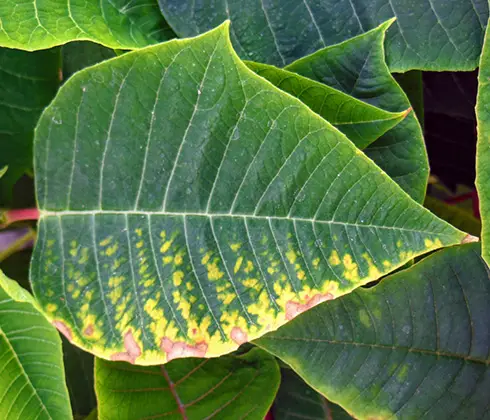
Another significant effect of magnesium deficiency is the impaired photosynthesis in plants. As magnesium is a key component of chlorophyll, its absence inhibits the plant’s ability to convert sunlight into energy. This can lead to stunted growth, reduced vigor, and compromised nutrient uptake. Additionally, magnesium deficiency hampers the plant’s ability to synthesize carbohydrates, amino acids, and proteins, which are vital for plant development and productivity. As a result, plants deficient in magnesium may exhibit restricted root development, decreased flower and fruit production, and an overall decline in their ability to withstand environmental stresses.
FAQ: Is it possible for plants to show symptoms of magnesium deficiency even when other nutrients are present in sufficient quantities?
Yes, it is possible. While plants require various nutrients for optimal growth, each nutrient plays a specific role in different physiological processes. Even if other nutrients are adequately supplied, a deficiency in magnesium can still occur and manifest as distinct symptoms. Therefore, it is essential for gardeners and farmers to ensure that all necessary nutrients, including magnesium, are provided in appropriate amounts to maintain healthy plant growth and development.
Research Studies on the Effects of Epsom Salt on Plant Growth
Several research studies have been conducted to investigate the effects of Epsom salt on plant growth. In one study published in the Journal of Plant Nutrition, researchers examined the impact of magnesium sulfate (the main component of Epsom salt) on tomato plants. The results showed that the application of magnesium sulfate to the soil significantly increased the plant’s overall growth and yield. Furthermore, it was observed that the treated plants exhibited enhanced photosynthetic activity and an improved ability to absorb essential nutrients.
Another study, published in the International Journal of Agricultural Research, focused on the effects of Epsom salt on wheat plants. The researchers found that the application of Epsom salt as a foliar spray significantly increased the magnesium content in wheat leaves, leading to improved plant growth. Additionally, it was noted that the treated plants exhibited increased protein synthesis and enzyme activity, which are crucial for healthy plant development. These findings suggest that Epsom salt can play a vital role in enhancing plant growth and productivity.
FAQ (based on information not previously discussed in the article):
Q: Can Epsom salt be used on all types of plants?
A: Epsom salt can be beneficial for a wide range of plants, including flowers, vegetables, shrubs, and trees. However, it is essential to consider the specific nutritional needs of each plant species. While most plants can benefit from the addition of magnesium sulfate, some may require different fertilizers or nutrients tailored to their specific requirements. It is advisable to consult gardening resources or seek professional advice to determine the suitability of Epsom salt for your specific plants.
Improving Nutrient Uptake with Epsom Salt
Epsom salt, also known as magnesium sulfate, has long been recognized for its potential to improve nutrient uptake in plants. By supplying an essential nutrient, magnesium, Epsom salt can enhance the overall health and vitality of plants, leading to better nutrient absorption and utilization. This, in turn, can result in stronger, more productive growth.
One frequently asked question is whether Epsom salt is suitable for all types of plants. While Epsom salt can have beneficial effects on many plants, it is important to note that not all species have the same nutritional requirements. Some plants may require higher levels of magnesium than others, while some may already have sufficient levels in their growing medium. It is best to do some research or talk to a knowledgeable horticulturist to determine if your specific plants could benefit from Epsom salt application.
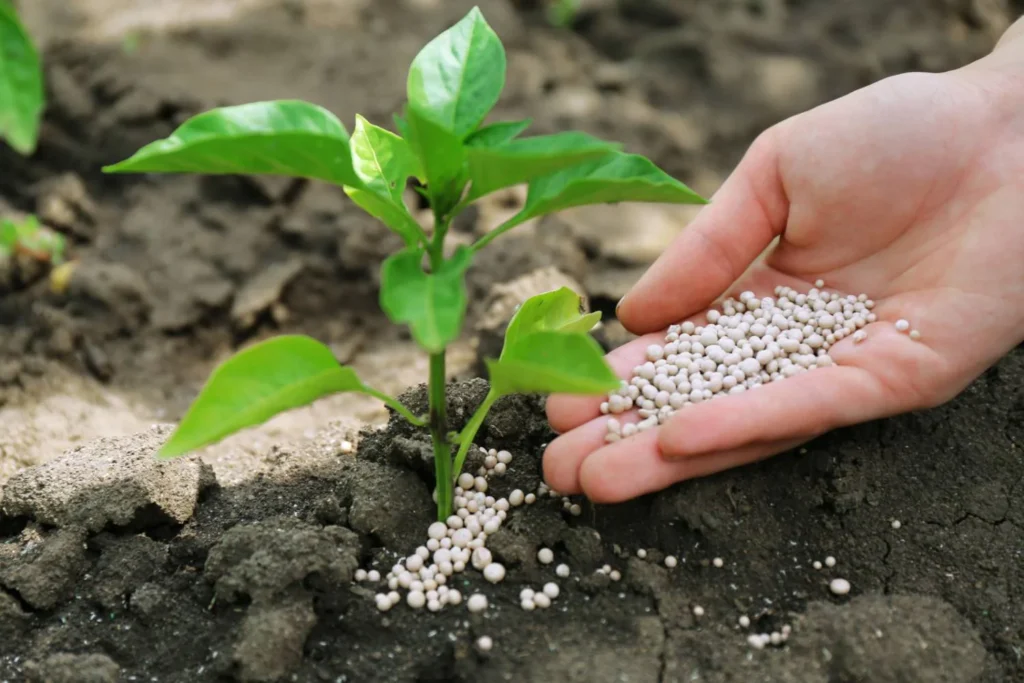
Epsom Salt as a Natural Fertilizer Alternative
Epsom salt, commonly known as magnesium sulfate, is not only used for medicinal purposes and relaxation, but it also serves as a natural fertilizer alternative for plants. Many gardeners and plant enthusiasts have started incorporating Epsom salt into their plant care routines due to its numerous benefits.
One of the main reasons why Epsom salt is considered a natural fertilizer alternative is because of its high magnesium content. Magnesium is an essential nutrient for plants, playing a crucial role in various physiological processes. It aids in the formation of chlorophyll, which is responsible for the green color in plants and is essential for photosynthesis. Moreover, magnesium is involved in the activation of enzymes and plays a vital role in nutrient uptake, translocation, and utilization by plants.
By providing plants with an adequate supply of magnesium, Epsom salt helps improve overall plant health and growth. It enhances nutrient uptake, leading to better absorption of essential macronutrients like nitrogen, phosphorus, and potassium. As a result, plants become more efficient in utilizing available nutrients, promoting vigorous growth, and increasing their overall resilience to environmental stressors. Additionally, the enriched magnesium levels contribute to an enhanced disease resistance in plants, as magnesium is known to activate certain plant defense mechanisms.
While Epsom salt can be a beneficial natural fertilizer alternative, it is essential to understand the proper dosage and application methods to avoid any potential risks or detrimental impacts on plant health. Additionally, it is recommended to conduct soil tests regularly to ensure that the nutrient levels, including magnesium, are well-balanced in the soil. Overall, incorporating Epsom salt into your plant care routine can be an effective way to support optimal plant growth and vitality while reducing the dependency on chemical-based fertilizers.
Dosage and Application Methods for Epsom Salt
When it comes to using Epsom salt in your garden, proper dosage and application methods are key to ensuring its effectiveness. The general rule of thumb is to apply Epsom salt to your plants once every 4-6 weeks during the growing season. However, the specific dosage may vary depending on the type of plant you are treating. For most plants, a mixture of 1 tablespoon of Epsom salt diluted in 1 gallon of water is sufficient. This solution can be applied directly to the soil at the base of the plant, avoiding the leaves to prevent any potential leaf burn.
As for application methods, there are a few different ways you can use Epsom salt in your garden. One method is to apply it as a foliar spray. To do this, simply mix 2 tablespoons of Epsom salt with 1 gallon of water and transfer the solution to a spray bottle. Spray the mixture onto the leaves of your plants, making sure to cover both sides of the foliage. Another method is to incorporate Epsom salt into your regular watering routine. Dissolve the recommended amount of Epsom salt in water and use it to water your plants as you normally would. This allows the salt to be absorbed by the roots and distributed throughout the plant’s system. Overall, it is important to follow the dosage instructions and choose the application method that works best for your specific plants to ensure optimal results.
Potential Risks and Precautions When Using Epsom Salt on Plants
While Epsom salt can be beneficial for plants, it is important to be aware of the potential risks and take necessary precautions when using it. One potential risk is over-application. Using too much Epsom salt can lead to a buildup of minerals in the soil, which can hinder the plant’s ability to absorb other nutrients. It is crucial to follow the recommended dosage and application methods to avoid this issue.
Another risk to consider is the impact of Epsom salt on the pH level of the soil. Epsom salt is acidic, and excessive use can lead to soil acidification. This can be detrimental to certain plants that thrive in more alkaline environments. Monitoring the pH level of the soil and adjusting accordingly is important to prevent any adverse effects on plant growth.
To ensure safe use of Epsom salt, take precautions such as wearing gloves when handling it, as it can be irritating to the skin. Additionally, always store it in a secure and dry location, away from children and pets. If in doubt about its suitability for specific plants, it is always advisable to consult with a local gardening expert or conduct a small-scale test before applying it to a larger area. By being mindful of the potential risks and taking proper precautions, you can maximize the benefits of using Epsom salt without jeopardizing the overall health and growth of your plants.
Evaluating the Impact of Epsom Salt on Plant Yield
When evaluating the impact of Epsom salt on plant yield, several factors come into play. Numerous research studies have been conducted to understand the effects of Epsom salt on plant growth and productivity. These studies have shown promising results, suggesting that Epsom salt can indeed have a positive impact on plant yield.
One of the key reasons why Epsom salt can enhance plant yield is its high magnesium content. Magnesium is an essential nutrient for plant health and plays a crucial role in various physiological processes, including photosynthesis, enzyme activation, and nutrient uptake. When plants lack sufficient magnesium, their growth and development can be stunted, resulting in decreased productivity. By providing plants with a readily available source of magnesium, Epsom salt helps to ensure that they have the necessary nutrients for optimal growth. This, in turn, can lead to an increase in plant yield.
However, it is important to note that the impact of Epsom salt on plant yield may vary depending on several factors, including the plant species, soil conditions, and specific nutrient deficiencies. Additionally, it is crucial to follow proper dosage and application methods when using Epsom salt to avoid potential risks or negative impacts on plant health. Therefore, it is advisable to consult with experts or conduct further research to determine the best practices for incorporating Epsom salt into your plant care routine and maximize its potential benefits on plant yield.
Enhancing Plant Health and Disease Resistance with Epsom Salt

Epsom salt, commonly known as magnesium sulfate, is not only beneficial for promoting plant growth but also plays a significant role in enhancing plant health and disease resistance. By providing plants with an adequate supply of magnesium, Epsom salt helps to fortify their immune systems, making them more resistant to various diseases and pests.
One unique FAQ that often arises is whether Epsom salt can be used as a preventative measure against fungal diseases. While Epsom salt is not a cure-all for plant diseases, it can help improve the overall health of plants and indirectly contribute to disease prevention. By ensuring that plants receive the necessary nutrients, such as magnesium, they become less susceptible to stress factors that can weaken their defense mechanisms, making them more resilient and better able to combat diseases. It is important to note, however, that proper plant care practices, such as avoiding overwatering and providing adequate air circulation, should be followed in conjunction with the use of Epsom salt for optimal disease resistance.
The Role of Epsom Salt in Improving Flowering and Fruit Development
One of the significant roles of Epsom salt in plant growth is its ability to improve flowering and fruit development. Epsom salt contains magnesium, a crucial nutrient required by plants to produce chlorophyll and facilitate various biochemical reactions. It plays a vital role in promoting photosynthesis, which allows plants to convert sunlight into energy and ultimately produce flowers and fruits.
Magnesium deficiency in plants often leads to poor flower and fruit formation. Symptoms may include reduced flower bud development, smaller or misshapen fruits, or even flowers dropping prematurely. By applying Epsom salt to the soil or as a foliar spray, gardeners can provide plants with the necessary magnesium to address any deficiencies. The additional magnesium helps stimulate plant growth, enhance flower production, and result in more abundant and healthier fruits. Remember to follow the recommended dosage and application method for Epsom salt to ensure optimum results.
Comparing Epsom Salt to Other Plant Nutrient Supplements
With the wide range of plant nutrient supplements available on the market, it can be overwhelming to determine which one is the best choice for your plants. One popular option that many gardeners turn to is Epsom salt. However, it is essential to understand how Epsom salt compares to other plant nutrient supplements in order to make an informed decision for your plant care routine.
One key advantage of Epsom salt is its affordability and accessibility. Unlike some other plant nutrient supplements, Epsom salt can be easily found in most stores and is often more budget-friendly. Additionally, Epsom salt is a natural substance, consisting of magnesium and sulfate, making it an environmentally friendly choice compared to synthetic chemical fertilizers. This can be particularly appealing for gardeners who prioritize organic gardening practices or have concerns about the potential negative impacts of synthetic substances on plant health and the surrounding ecosystem.
Another factor to consider when comparing Epsom salt to other plant nutrient supplements is its specific benefits for plants. Epsom salt is particularly known for its ability to provide plants with magnesium, an essential nutrient that plays a crucial role in various plant functions. Magnesium aids in chlorophyll production, which is essential for photosynthesis, and promotes overall plant growth and development. Additionally, magnesium deficiency can lead to yellowing leaves and stunted plant growth. By incorporating Epsom salt into your plant care routine, you can supplement your plants with this vital nutrient, ensuring their optimal health and vitality.
| Aspect | Epsom Salt (Magnesium Sulfate) | Other Plant Nutrient Supplements |
|---|---|---|
| Composition | Magnesium and sulfur. | Varied compositions, including macro and micronutrients. |
| Primary Nutrients | Magnesium (Mg) and sulfur (S). | Nitrogen (N), phosphorus (P), potassium (K), and more. |
| Function | Addresses magnesium and sulfur deficiencies, aids in chlorophyll production. | Provides a broader spectrum of nutrients for overall plant health. |
| Solubility | Highly soluble in water. | Solubility varies; some nutrients may require special formulations. |
| Application Method | Dissolved in water and applied as a foliar spray or soil drench. | Various application methods: liquid fertilizers, granular formulations, etc. |
| Plant Uptake Efficiency | Magnesium and sulfur are readily absorbed by plants. | Uptake efficiency depends on the nutrient form and soil conditions. |
| Common Sources | Mined or manufactured magnesium sulfate. | Derived from mineral sources, organic matter, or synthesized. |
| Cost-Effectiveness | Generally cost-effective. | Costs vary based on the nutrient composition and source. |
| Nutrient Interaction Risks | Limited risk of nutrient imbalances when used as directed. | Possibility of nutrient imbalances if not used judiciously. |
| Compatibility with Other Nutrients | Compatible with most fertilizers and nutrients. | Compatibility varies, and some supplements may require separate applications. |
| Specific Uses | Effective for correcting magnesium deficiencies in plants. | Suitable for overall plant nutrition and targeted nutrient correction. |
| Situational Applicability | Best suited for magnesium-deficient soils or crops. | Versatile and applicable to various crops and growth stages. |
Best Practices for Incorporating Epsom Salt into Your Plant Care Routine
To maximize the benefits of Epsom salt for your plants, it is important to incorporate it into your plant care routine using best practices. Firstly, it is recommended to start by conducting a soil test to determine the magnesium levels in your soil. This will help you determine if your plants truly need the additional magnesium that Epsom salt provides.
Once you have determined the need for Epsom salt, it is important to apply it correctly. Dissolve the salt in water before applying it to the soil, as this will ensure even distribution. It is advisable to use a watering can or sprayer to apply the solution directly to the soil around the plants. Avoid applying Epsom salt directly onto the foliage, as it may cause leaf burn.
Incorporating Epsom salt into your plant care routine through proper application techniques and consideration of your plants’ magnesium needs can lead to healthier and more vibrant growth. However, it is always important to follow the recommended dosage and not to overuse Epsom salt. Using it as a supplement along with other nutrients can contribute to a well-rounded plant care regimen.
Answering Common Questions About Epsom Salt and Plant Growth
How often should I use Epsom salt on my plants? It is recommended to use Epsom salt as a plant supplement on a regular basis, but the frequency may vary depending on the specific needs of your plants. In general, it is advisable to apply Epsom salt every 4-6 weeks during the growing season. However, it is important to monitor your plants for any signs of nutrient deficiencies or excessive salt buildup. Adjust the frequency of Epsom salt application accordingly to avoid over-fertilizing or causing harm to your plants.
Can Epsom salt be used on all types of plants? While Epsom salt can benefit a wide range of plants, it is important to note that some plants may be more responsive to its application than others. Epsom salt is particularly suitable for plants that require magnesium for healthy growth and development. This includes but is not limited to tomatoes, peppers, roses, and citrus trees. However, it is always a good idea to research the specific nutritional requirements of your plants before using Epsom salt. Additionally, some specialized plants or sensitive species may have specific needs or adverse reactions to Epsom salt, so it’s best to consult a horticulturist or gardening expert if you have any concerns.
What are the benefits of using Epsom salt for plant growth?
Epsom salt can benefit plant growth by providing essential nutrients, improving nutrient uptake, enhancing flowering and fruit development, and promoting overall plant health.
Why is it important to understand the nutritional needs of plants?
Understanding the nutritional needs of plants is crucial for providing them with the right balance of nutrients for optimal growth and development.
What role does magnesium play in plant health?
Magnesium is an essential nutrient for plants as it is involved in various physiological processes, such as chlorophyll production, enzyme activation, and nutrient uptake.
How does Epsom salt provide magnesium to plants?
Epsom salt is composed of magnesium sulfate, and when dissolved in water or applied to the soil, it releases magnesium ions that can be readily absorbed by plant roots.
What are the effects of magnesium deficiency in plants?
Magnesium deficiency can cause yellowing of leaves, stunted growth, decreased photosynthesis, and reduced overall plant vigor.
Are there any research studies on the effects of Epsom salt on plant growth?
Yes, several research studies have been conducted to evaluate the impact of Epsom salt on plant growth, nutrient uptake, and overall plant health.
Can Epsom salt improve nutrient uptake in plants?
Yes, Epsom salt can improve nutrient uptake in plants by enhancing root function and increasing the availability of essential nutrients in the soil.
Can Epsom salt be used as a natural fertilizer alternative?
Yes, Epsom salt can be used as a natural fertilizer alternative, particularly for supplying magnesium to plants.
What are the recommended dosage and application methods for Epsom salt?
The dosage and application methods for Epsom salt may vary depending on the plant type and specific needs. It is best to follow the instructions provided on the packaging or consult a gardening expert for guidance.
Are there any potential risks or precautions to consider when using Epsom salt on plants?
While Epsom salt is generally safe to use, it is important to avoid overapplication, as excessive magnesium levels can negatively affect plant growth. Additionally, it is advisable to conduct a soil test before using Epsom salt to ensure it is needed.
Does using Epsom salt have an impact on plant yield?
Yes, using Epsom salt can potentially enhance plant yield by improving nutrient uptake, promoting healthy growth, and increasing flowering and fruit development.
Can Epsom salt enhance plant health and resistance to diseases?
Yes, Epsom salt can enhance plant health and improve their resistance to diseases by providing essential nutrients and promoting overall vigor.
What role does Epsom salt play in improving flowering and fruit development?
Epsom salt can improve flowering and fruit development by supplying plants with magnesium, which is crucial for these processes.
How does Epsom salt compare to other plant nutrient supplements?
Epsom salt specifically provides magnesium to plants, while other nutrient supplements may offer a broader range of essential elements. The choice of supplement depends on the specific needs of the plants.
What are the best practices for incorporating Epsom salt into a plant care routine?
It is recommended to follow the instructions provided on the packaging and apply Epsom salt as directed. Regular monitoring of plant health and adjusting the dosage accordingly is also advisable.

